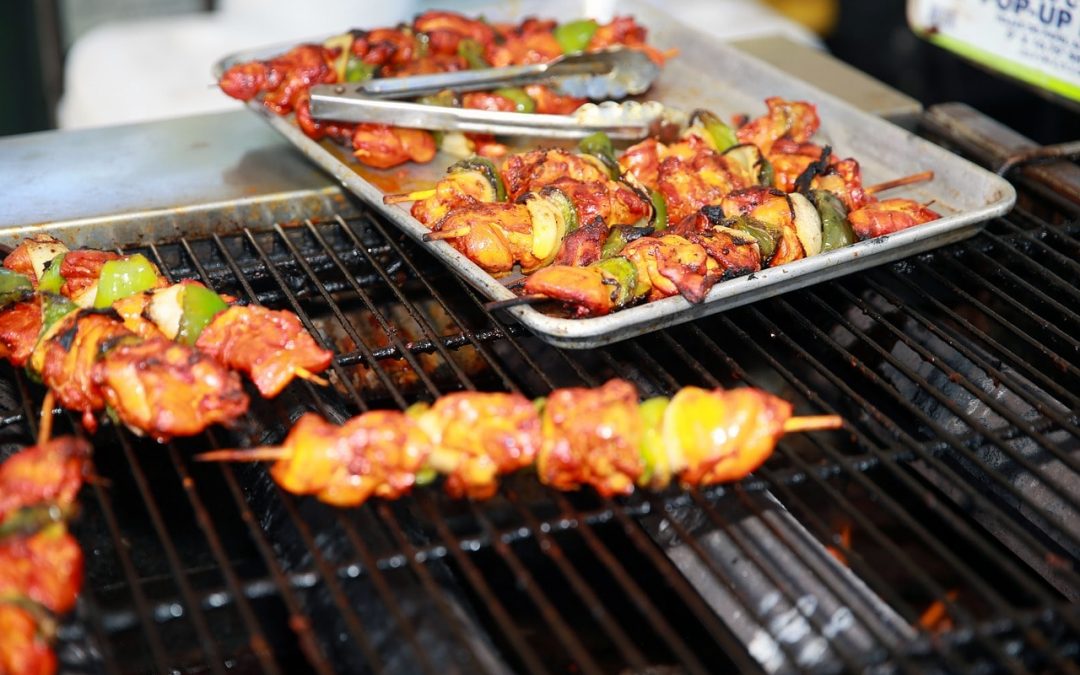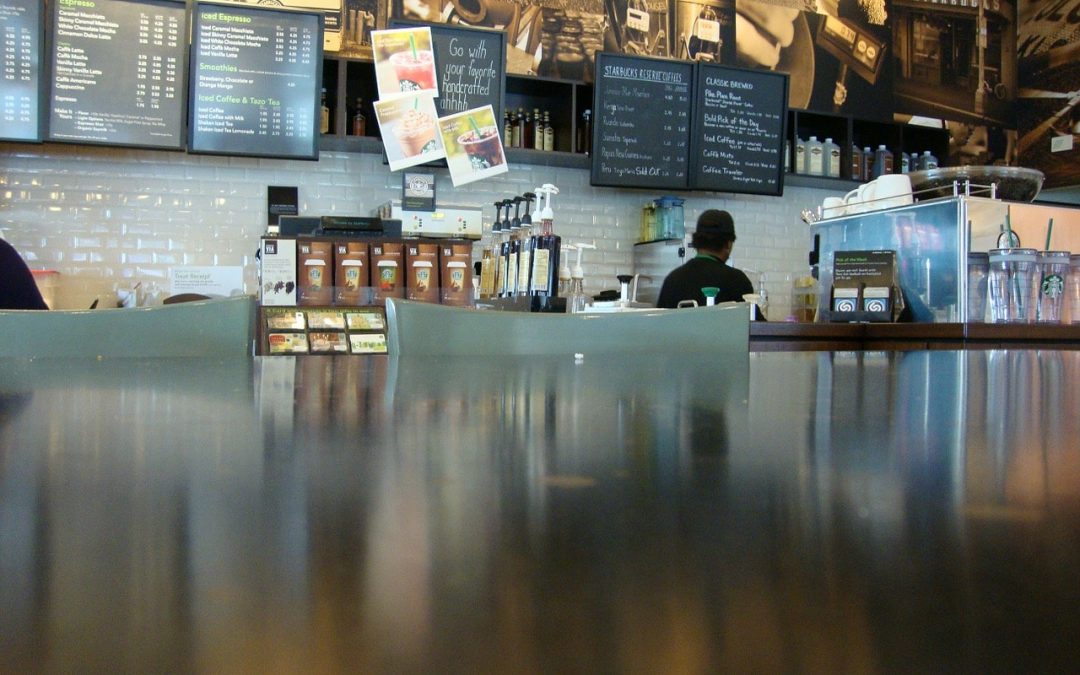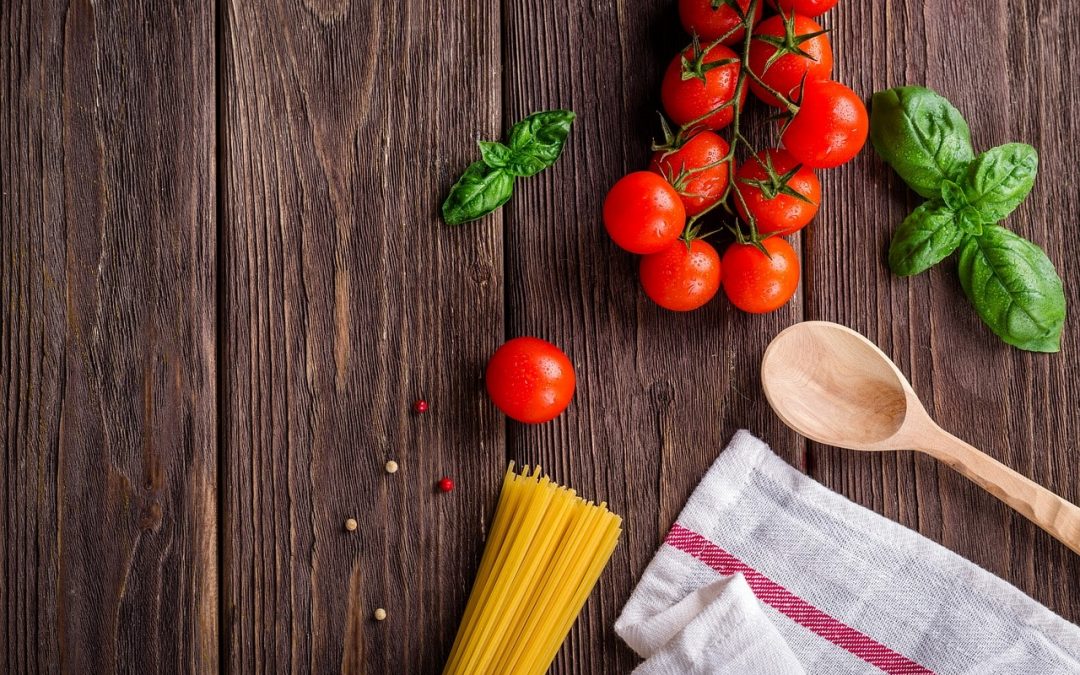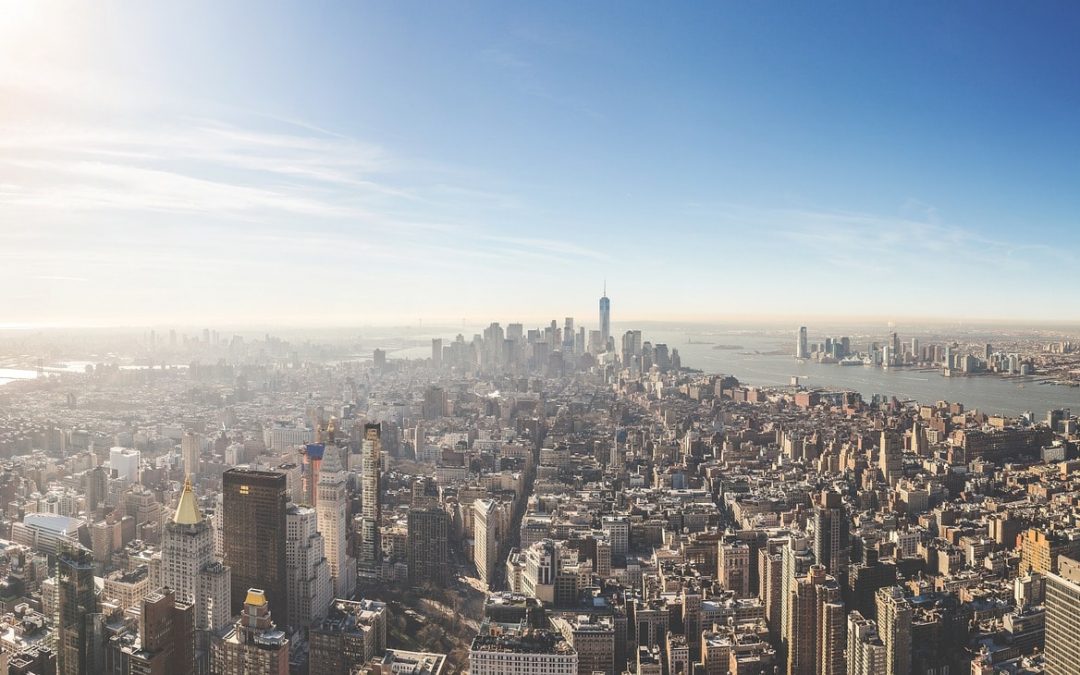
by BCB Property Management | Nov 23, 2017 | Neighborhoods
One of Brooklyn’s most appealing neighborhoods for its proximity to Manhattan and relative affordability compared to it’s neighbor to the south, Williamsburg, Greenpoint is home to some of the most intriguing food options in NYC. Long a beacon for Polish immigrants, this area is home to some of the finest pierogies, kielbasa, and other favorites this side of Gdansk.
Polish and Slavic Center Cafeteria
Untouched by the new wave of residents, this old-fashioned ethnic hall serves up untouchable ethnic favorites in a declasse, cafeteria setting. The prices are nearly as pleasing as the food, with affordable options in old-country comfort food to rival any hipster cafe. The stark decor and still atmosphere mean you might not be coming here on a first date, but this is the kind of place you bring them once you’ve got someone special. These pierogies are so good, you’re not going to want to share them with just anybody.
Karczma
Looking for something a little more modern? Opened in 2007, this popular rustic-looking Polish restaurant brings to mind an old country farmhouse, with the sumptuous dishes that could have come straight out of your babcia’s kitchen. Garnering praise from locals and tourists alike, Karczma stands out for having a friendly, knowledgeable staff and a wide array of menu options. If you’re looking to come by on a weekend, get here early! The only downside to the great food and atmosphere is that the place fills up quick.
Kiszka Meat Market
If you came to Greenpoint looking for a piece of Polish heaven to bring home, look no further than this deli and meat market in the heart of the neighborhood on Manhattan Avenue. Regulars come here to fill their freezers with the best fresh sausage, bacon and pork cuts at throwback prices. Even your vegetarian friends will love to come by Kiszka, with the city’s most tantalizing cabbage rolls on order.
Loved this culinary round-up? To see more great NYC food enclaves, check out our trips to Jackson Heights in Queens, the Bronx’s Arthur Avenue district, and Caribbean favorites in Crown Heights, Brooklyn.

by BCB Property Management | Nov 10, 2017 | Neighborhoods
You don’t have to wait until the West Indian Day parade to get a Brooklyn-based taste of the vibrant Caribbean. Crown Heights might be transforming rapidly, but it’s still home to the best Caribbean food options in the city. These are just a few of the local favorites that bring the sensations of the islands up north to NYC.
De Hot Pot
Just a few steps away from the Prospect Park stop on the BQ line, this no-frills spot will work for day-trippers in a hurry and savorers alike. If you’re on a budget, satisfied visitors recommend their under $2 doubles (two flatbreads filled with curried chickpeas) for a Caribbean delicacy that won’t stretch your wallet. Wash them down with a Solo soda for the full island experience.
Silver Krust
Don’t let the name fool you, because the patties here are often better than the more well-known Golden Krust, with seasonings straight out of Jamaica. The Caribbean nation’s savory national fruit, ackee, can be found here in a crisp, flaky patty that you won’t find in any supermarket freezer. Silver Krust also serves up traditional favorites in portions so huge, you’re really getting two meals. Clear some room in your fridge before you make your way here!
Glady’s
If the idea of eating while standing under fluorescent lighting isn’t your thing, this contemporary spot on Franklin Avenue is bridging the gap between old and new. With prices closer to old Crown Heights than new in a modern setting, you’ll be glad to settle in and try out their adventurous takes on traditional classics. The jerk lobster and bok choy take you outside of the usual Caribbean comfort zone while still keeping the essence of that island flavor.
The Islands
If glamour isn’t a necessity for you, how does a cash-only joint squeezed between a Key Food and a Chinese takeout sound? The Islands’ interior is not so gritty, though, and once you sit down with a generous portion of perfectly moist stewed oxtail flanked by cabbage, rice, and peas, your surroundings won’t matter at all. Caribbean drinks like sorrel juice are available and offer a nice fruity counterbalance to the savory meats.
Cock’s
Rounding out your Brooklyn Caribbean tour, a taste of Barbadian life is on the menu at this Bajan favorite. Come here for seafood favorites like flying fish and the leaner kingfish, both regional delicacies. The polenta-like cou cou is a must, and not only on Fridays (as it’s traditionally eaten in Barbados). More typical Caribbean items like jerk chicken are on the menu here as well, and hold up to scrutiny from even the most discerning island foodie.
Loved this culinary round-up? To see more great NYC food enclaves, check out our trips to Jackson Heights in Queens and the Bronx’s Arthur Avenue district.

by BCB Property Management | Nov 3, 2017 | Neighborhoods
Of all the ways to get around New York City, nothing will give you a better appreciation of all the comings and goings of each particular neighborhood than riding a bicycle. While caution (and a helmet) are always needed, more and more areas of the five boroughs are being adapted to safely accommodate those on two wheels. More than 300 miles of bike-friendly paths have been established across the city in the last five years alone, and these four neighborhoods stand out among the best places for cyclists to set up shop in the city.
Park Slope
Considered a haven for young families with strollers, this neighborhood has made great accommodations in recent years for people riding on half as many wheels. Picturesque Prospect Park West’s dedicated 2-way bike lane, guarded against traffic by a parking lane, is one of the best stretches of Brooklyn for both weekend riders and daily commuters. Not to mention the 3.35 mile loop inside Prospect Park itself, great for exercise loops or slower treks to admire the scenery.
Battery Park City
This young neighborhood, despite being near one of the city’s worst areas for car traffic, actually offers a peaceful calm during the daytime, along with easy access to the Hudson River bike path. One of the most popular routes in the city, this path leads riders up the entire length of Manhattan’s West Side, making BPC a great staging area for your two-wheeled adventures. Most buildings in the neighborhood offer dedicated bike storage, meaning you won’t have to lug your ride on any stairs or elevators.
Alphabet City
On the other side of the island, this locale east of the East Village boasts calm, quieter streets perfect for pleasant bike outings far from sometimes-worrisome crowds. There may not be too many subway stations around, but seasoned bike riders may consider that an advantage. Alphabet City’s proximity to the protected bike paths running along 1st and 2nd Avenues means your trips uptown won’t require a Metrocard, just your trusty bike and your own two legs.
Greenpoint
Bike lovers will find themselves right at home in Brooklyn’s northernmost neighborhood, where a low number of train stops and long bike lanes along Kent Avenue and Franklin Street give bike riders a distinct travel advantage over straphangers. For jaunts into the city, the Williamsburg Bridge is a short ride away. If you’re ever in need of a fix, local spot B’s Bikes serves the neighborhood with notoriously knowledgeable but friendly service.

by BCB Property Management | Oct 1, 2017 | Neighborhoods
One of the most ethnically diverse regions in the entire country, Queens is unsurprisingly home to many tantalizing food options from many corners of the world. The South Asian enclave of Jackson Heights is no exception. This residential outerborough haven is home to some of the finest Indian, Bangladeshi, and Pakistani cuisine this side of the Ganges River.
If your experience of Indian food starts and ends with supermarket curry, let any one of these eateries be your introduction to a world of culinary delight. This walkable neighborhood (traffic and cramped streets can make driving here a hassle) is easily accessible by the 7, E, F, M, and R trains, as well as the Long Island Railroad.
Jackson Diner
This neighborhood institution was originally housed in a former greasy-spoon diner that often had trouble containing the visiting masses, with lines going out the door at times. Ownership has kept the name but moved into a more spacious location in the mid-90s to better suit the crowds their top-notch offerings attracted. For value, there’s no beating their lunch buffet, but anytime you’re hungry, you won’t regret the trip.
Samudra Vegetarian Restaurant & Chaat House
Don’t let the “v” word scare you away, carnivores, this eatery’s savory wares will have you forgetting all about those meat cravings. Samudra features high-quality portions at wallet-friendly prices, with rave reviews from locals and visitors alike. Try their Dosa (stuffed, crepe-like pancake with vegetable filling) or palak paneer (fresh cheese in spinach-based sauce) to get a taste of the subcontinent without leaving the five boroughs.
Maharaja Sweets & Snacks
Once you’ve polished off an entree (or two), talk a walk down 37th Avenue to this raved-about sweet shop. Stocked with brightly colored favorites like burfi and galub jamun, as well as homemade ice cream, this spot’s a feast for the eyes as well as the palate. Small bites are available too if you feel like grabbing an extra samosa for later!
Patel Brothers
If you can envision yourself craving the flavors of India quickly after leaving, but don’t look forward to a subway journey every time, stop by Patel Brothers grocery store before you leave Jackson Heights. This chain has all the cardamom, curry leaves, and basmati rice you need to take a stab at recreating the great meals you’ve had in the neighborhood. Don’t worry, if your homemade approximations don’t live up to your memories of Jackson Heights, these fine eateries will be happy to welcome you back.

by BCB Property Management | Sep 8, 2017 | Neighborhoods, New York City
It’s become a cliche at this point to point out that Little Italy is littler than ever, and while it’s certainly true, that doesn’t mean that NYC is lacking for great Italian food. Those willing to take a trip up north to the Bronx neighborhood known as simply Arthur Avenue (after it’s main drag) are in for some of the finest traditional meals with a local flavor all their own.
Declared New York’s best food neighborhood by Esquire Magazine, the area also called Belmont features a long history of Italian-American culture from immigrants who came here in the early 20th century. Like its more famous equivalent in Manhattan, this cozy neighborhood might seem a little closed to outsiders at first, but after taking your first bite in one of these fine eateries, you’ll feel like family.
Antonio’s
A short walk off of Arthur Avenue, away from the tourists, should take you to this local favorite where the meats are plentiful and cooked to perfection. They might be best known for their falling-off-the-bone short ribs, which come smothered in rich sauce that could have come from any number of area grandmother’s kitchens.
Roberto’s
A favorite of the celebrity crowd, Robert Paciullo opened his two-floor trattoria which features a rotating menu of top-quality, Michelin Guide-approved dishes. Come in one night for tender risotto with cuttlefish, come back tomorrow for the tender braised rabbit. If you’re like most diners, you’ll stick around for one of Roberto’s signature desserts as well, like sbricolata crumb cake with amaretto, or his old country-style tiramisu.
Mike’s Deli
For those days when you’re not feeling as fancy, you can take in a lunch at this marketplace where the eggplant parm is a year-round hit. The owners also run the neighboring Bronx Beer Hall if your group is looking to follow up your sandwiches with some craft suds. Mike’s olives and burrata are a must-try.
Vincent’s Meat Market
For a taste of Belmont that you can take home with you, visit Vincent’s Arthur Avenue storefront for all the smoked meat, sausage, and custom beef cuts your carnivorous heart desires. Open for over 60 years, Vincent’s always-fresh meats, expert customer service, and worth-the-trip prices all make it clear why they’ve been the neighborhood’s top butcher for all these years.

by BCB Property Management | Sep 1, 2017 | Neighborhoods, New York City
Any New Yorker can tell you that this is a city defined by its wide variety of neighborhoods. Across all the boroughs, every distinct enclave has its own character and personality, not to mention history. Making your way in and around the city starts with a working knowledge of its diverse assortment of neighborhoods.
Founded as a Dutch colony, many of New York City’s neighborhood names date back to that time. The Dutch may have left after the British took control of the city and renamed it from New Amsterdam, but labels such as Brooklyn and The Bronx (derived from the Dutch names Breukelen and Bronck) still remain as reminders of the city’s roots. Not surprisingly, many neighborhoods retain the names they’ve had since those early colonial days.
Harlem
A cultural touchstone not just for the city but for the entire United States, Harlem is one of New York’s best-known neighborhoods. This home of legendary artists, poets, and attractions like the Apollo Theater and the Cotton Club was once an outpost for Dutch settlers who needed a space to stay far from New Amsterdam at the southern tip of Manhattan island. This safe haven was dubbed Nieuw Haarlem by Governor Peter Stuyvesant, after the Dutch city a short distance from the original Amsterdam. Once the Dutch left New York, the name was anglicized to just “Harlem.”
Astoria
Many streets of New York, such as Dyckman in Upper Manhattan and Schermerhorn in Brooklyn, were named for wealthy denizens of the area, whose properties defined those surroundings. For someone with the fortune of John Jacob Astor, just a street wouldn’t suffice. The neighborhood formerly called Hallett’s Cove was never actually home to the fur trader or his family, but given the label in order to attract him to invest in the Queens district. It didn’t quite work (he only invested $500) but the name stuck.
Red Hook
This maritime district has always been defined by the port and shipping that made Brooklyn one of the country’s busiest regions. Red Hook comes from the Dutch “roode hoek,” referring to the red clay soil of the neighborhood (long since buried under concrete roads) and the geographical point jutting out into Upper New York Bay. Interestingly enough, the “hook” of Red Hook refers to the Dutch word for “point” or “corner,” not any actual hook-like geographical feature.
Coney Island
It wasn’t only geographical features that inspired Dutch settlers in naming their new territories. This former beachfront getaway, home to the famed Cyclone and Wonder Wheel, got its name from the Dutch word conyne for “rabbit” after the wild rabbit population that lived on what was then an actual island, with a river separating it from the mainland. Shifting sediments attached the island to the rest of Brooklyn while rifle-toting settlers did away with the rabbits, but the Coney Island name remains.
Turtle Bay
Unlike Coney Island, this neighborhood wasn’t identified by any animal population. Rather, Turtle Bay got its name from the Dutch word deutal, or knife. Early settlers of the bay (which was filled in after the Civil War, allowing for further buildings eventually including the United Nations complex) noticed a resemblance to a bent knife and named the bay accordingly. Thanks to its proximity to the UN, Turtle Bay is now home to many foreign consulates, making it one of the more plainly diverse regions of the city.
Rockaway
The Dutch weren’t the only ones who gave names to the various neighborhoods of the city. Several of them, in fact, descend from the language of the Lenape tribe, the area’s indigenous inhabitants. Queen’s beachfront peninsula, a distinct part of the NYC map, got its name from the old Lenape word “rack-a-wakee,” whose meaning is not certain but is thought to mean “place of sands.” Also behind the names of Canarsie in Brooklyn and of course Manhattan, this language is one of many that makes New York City the unique melange of cultures famed worldwide.






